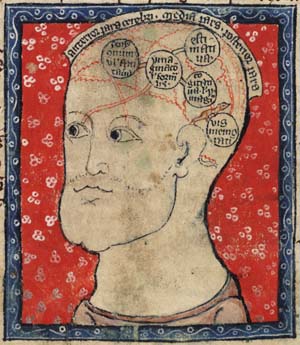The beak-nosed mercenary Federigo da Montifeltro, ruler Urbino and main patron of Piero della Francesca, also happened to own the finest private library in fifteenth-century Italy. Long since dispersed, it contained virtually the entire corpus of known Greek and Latin texts, together with many more recently created works: medieval and Renaissance encyclopaedias and studies of natural history; breviaries, missals, Bibles. Federigo had strong views on books and a simple rule of thumb when it came to collecting them. Every volume in his library had to be written out in manuscript form and, preferably, decorated with pictures painted by hand. As far as Urbino’s most illustrious Duke was concerned, the printed book, fruit of the labours of Gutenberg and Caxton, was a vulgar abomination – a thin, tawdry, mass-produced object, which served only to debase the properly solemn acts of reading and writing.
The sort of manuscripts that Federigo might have commissioned were richly illustrated copies of Cicero or Macrobius, written not in Gothic script but in the new Latinate scripts favoured by Renaissance humanists, antecedents of the now ubiquitous Times New Roman. Yet, as Federigo himself may have suspected, the invention of printing marked the beginning of the end for that type of painstakingly illuminated volume. That is why Renaissance manuscripts – including, indeed, a very fine copy of Cicero’s De Officiis – come right at the end of “The Cambridge Illuminations: Ten Centuries of Book Production in the Medieval West”, an enthralling exhibition divided between the Fitzwilliam Museum in Cambridge and the Cambridge University Library. Such books amounted to the last gasp of a great tradition. They were created on the cusp of a change in the very nature of the book, which, in its printed form, became a medium for the mass-dissemination of knowledge – accelerating scientific enquiry,...

The Cambridge Illuminations at The Fitzwilliam Museum and Cambridge University Library 2005
04-09-2005

